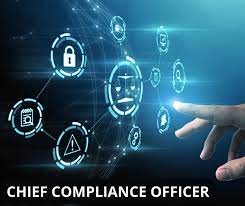This week, we are exploring a shift in the duties of care owed by corporate officers to the corporation. This shift is coming through the Chancery Court of Delaware in the case of McDonald’s Corporation and its former Executive Vice President and Global Chief People Officer of McDonald’s Corporation, David Fairhurst and his part in the creation of an absolute toxic atmosphere of sexual harassment at the very highest levels of the organization. The case is styled In re McDonald’s Corporation Stockholder Derivative Litigation, and in it, the court formally recognizes the oversight duties of officers of Delaware corporations. Today we discuss the role of the Chief Compliance Officer (CCO) in both the reasoning for the decision and what it means for CCOs going forward.
Perhaps one of the most interesting parts of the court’s opinion is that it draws from the US Sentencing Guidelines and their creation of the Chief Compliance Officer position as both reasons for the decision and as a guide to how the CCO position will be impacted by this ruling. The judge pointed to the US Sentencing Guidelines as a key basis for the creation of the original Caremark Doctrine. The court stated that a key reason for “recognizing the board’s duty of oversight was the importance of having compliance systems in place so the corporation could receive credit under the federal Organizational Sentencing Guidelines.” However, the Guidelines did not stop at the board level. The US Sentencing Guidelines mandated the creation of the CCO position.
Specifically, the “Guidelines state that “[h]igh- level personnel of the organization shall ensure that the organization has an effective compliance and ethics program” and such senior person(s) “be assigned overall responsibility for the compliance and ethics program.” The Guidelines went on to define an organization’s “high-level personnel” as “individuals who have substantial control over the organization or who have a substantial role in the making of policy within the organization,” which includes “a director; an executive officer; an individual in charge of a major business or functional unit of the organization, such as sales, administration, or finance; and an individual with a substantial ownership interest.”
The court somewhat dryly concluded “It would seem hard to argue that, simply by virtue of being an officer, the Chief Compliance Officer could not owe a duty of oversight. That, however, is the logical implication of Fairhurst’s position that only directors can owe a duty of oversight.”
The responsibilities of the CCO are wide and sometimes varied. Here the court stated, ““[s]pecific individual(s) within the organization shall be delegated day-to-day operational responsibility for the compliance and ethics program. Individual(s) with operational responsibility shall report periodically to high-level personnel and, as appropriate, to the governing authority, or an appropriate subgroup of the governing authority, on the effectiveness of the compliance and ethics program.” But the Delaware court also provided CCOs with some additional ammunition in their quest for true influence in a corporation by stating that “to carry out such operational responsibility, such individual(s) shall be given adequate resources, appropriate authority, and direct access to the governing authority or an appropriate subgroup of the governing authority.”
Finally, the CCO has a broad scope within an organization. Indeed the court noted, that only the Chief Executive Officer (CEO) has as broad a remit, stating “Although the CEO and Chief Compliance Officer likely will have company-wide oversight portfolios, other officers generally have a more constrained area of authority. With a constrained area of responsibility comes a constrained version of the duty that supports an Information-Systems Claim.”
Yet the breadth of this portfolio does not mean a CCO can be liable for every corporate failure, even those directly in culture or compliance. Here the standard of liability for the CCO is critical and standard is breach of the duty of loyalty through bad faith. The court noted, that in the decision of Stone v. Ritter, upholding the original Caremark decision, “the Delaware Supreme Court adopted the Guttman formulation and stated that a breach of the duty of loyalty, such as acting in bad faith, was a “necessary condition to liability.” After Stone, then-Vice Chancellor Strine acknowledged that Caremark duties carried overtones of care, but explained that “to hold directors liable for a failure in monitoring, the directors have to have acted with a state of mind consistent with a conscious decision to breach their duty of care.”
Rarely, if ever do you see a CCO engage in bad faith. There have been some instances but I can think or only one or two that rise to the level of bad faith. The good news for CCOs is that while there may be a new cause of action against them for a duty of oversight; if there is a compliance program in place and if that compliance program detects wrongdoing which is reported up to the Board; a CCO has most probably met their duty under this decision.
Please join me tomorrow as I explore how this court decision, together with the CCO certification mandate by the Department of Justice, the Monaco Memo and the new Corporate Enforcement Policy will all change the relationships and dynamics of Chief Compliance Officers in the corporate world.




